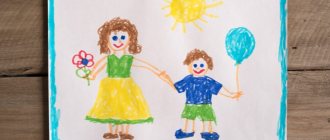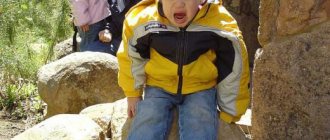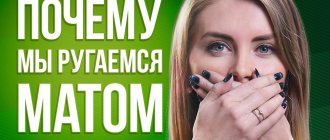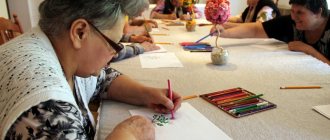Good breeding is a measure of personal maturity, revealed in the coherence of knowledge, beliefs, behavioral patterns and characterized by the degree of formation of socially indigenous qualities. Good breeding is a current indicator of personal maturity, in this it differs from good breeding, which is a potential level of personal formation, the territory of its possible development. Society considers the analyzed concept to be a mandatory quality, as a result of which parents try to diligently cultivate it in their offspring. This is due to the benefit of society to have educated homo sapiens who sacredly honor its norms.
What is good manners?
Today, education and good manners are phenomena of great significance. Of course, modern society requires new views and ideas. It should not be argued that the principles on which the psychology of education is based are outdated. They simply require change and transformation in connection with social development. This problem is becoming increasingly relevant in the scientific world and requires rethinking.
The study of such an issue as human upbringing is justified by methods and approaches of pedagogical science, which are characterized by reliability and validity. Despite the fact that pedagogy is an independent science, it uses methods from related sciences - philosophy, political science, psychology, ethics, sociology and history, and others.
Education is one of the most important axiological components that is part of the social structure of the individual. But the definition doesn't end there. Also, education is a system of social concepts that determine a person’s life (for example, relationships, desires, values, actions).
What kind of educated person is he?
Standards of behavior are created by people. Therefore, there is disagreement in defining a respectful person. Such disputes are easy to resolve. Ask the people around you why they consider you a well-mannered person. We list the criteria that are recognized by society:
- Charm and pleasant communication. A well-mannered person radiates goodwill, speaks competently, and does not resort to a raised tone. People are drawn to such a person and surround him with attention.
- Intelligence. For many, this is synonymous with a cultural personality. An intelligent person is reserved, taciturn, and has self-esteem. Doesn't get out of balance, no matter what happens around you.
- Tactfulness and delicacy. A well-mannered person would rather remain silent than express an opinion that will offend his interlocutor. In conversation he does not use swear words and does not touch upon topics that are unpleasant to others.
- Respect. Not ostentatious quality and playing in public are noted. A well-mannered person will treat a stranger or a loved one with equal respect.
It is common to consider well-mannered people to be modest, quiet, downtrodden and without their own opinions. In fact, such a person is confident and self-sufficient, he does not need to prove anything to others.
Expression of good manners
Personality education combines general and individual aspects, which are expressed in needs, values, desires, motives and orientations. They have a behavioral form, manifested in the following:
- A person’s relationship with the outside world and his life.
- Attitude to the achievements of civilization and cultural values.
- Striving to realize your goals and potential opportunities.
- A sense of community with the people around you.
- Respect for the rights and freedoms of your neighbor.
- Active life and social position.
- Treating yourself as a bearer of individuality.
Determining the level of education should concern not only an individual person, but also entire groups of people and nations. To achieve this character trait, they use the systematic activities of state and public institutions, characterized by purposefulness, to create special conditions that cultivate good manners. This process is called education.
Good manners is a characteristic that gives a person more opportunities to do a lot of good for other people and for himself. The socialization of an individual includes the process of education, and it is given no small importance.
The concept of "good manners"
Control over the educational process
2.1 The concept of “good manners”
One of the most important problems of education is the problem of moral development of the individual. Over the course of centuries of development, society has developed a special form of regulation of human life - morality, which enshrines universal human values and norms that determine human activity and interaction between people.
When determining the initial provisions on the level of education, it is necessary to proceed from the integrity of the educational process, where the education, training and development of students is carried out in a single pedagogical personality-oriented system, which is based on the priority of individual education. At the same time, education should be understood as the organization of the process of personal development. The level of education is a criterion for assessing the quality of education results.
The concept of “good manners” is interpreted ambiguously in pedagogical theory and practice. Considering the process of education in a broad sense as the creation of conditions for the holistic development of an individual, education is understood as a certain level of its intellectual, social and spiritual development. In a narrower sense, good manners means the moral education of an individual, which is natural if we consider a person’s morality to be his central, core characteristic. At the same time, moral education itself is considered by ordinary consciousness in a rather truncated way - as the conformity of a person’s behavior and actions with moral norms and principles that are accepted in society and are manifested, first of all, in the culture of behavior and communication, that is, in external forms of behavior. In order to determine the true upbringing of an individual, one must have a good understanding of the specifics of morality as a normative regulation of people’s behavior.
There are two approaches to understanding the moral education of an individual. According to the first, good manners is the assimilation and consolidation in the consciousness and behavior of a person of the norms and requirements of morality without sufficiently deep penetration, comprehension, experience, and acceptance by the inner world of the individual of these norms and requirements. An individual acts morally because it is customary, because those around him do so, because he will be reprimanded for opposite actions.
According to the second approach, true education is measured by the level of moral development of an individual, when the driver of a person’s behavior is his ideas about what is proper and valuable, individual principles of conscience, when a person acts morally because his convictions, his conscience do not allow him to behave differently.
Unfortunately, the traditional education system is focused on imparting moral knowledge, introducing a certain system of norms and principles into the child’s consciousness, and not on developing his moral self-awareness. In modern conditions, when society is losing previously existing norms and principles of morality, and new ones have not yet been developed, it becomes especially important to develop in students the ability for self-determination and moral choice, based on a high level of moral development of the individual.
The meaning of education today lies in the formation of a system of human relations to the world, to oneself, in the formation of the ability of self-determination in situations of moral choice. The problem arises of a person becoming a subject of his life, free not only to make decisions, but also to bear responsibility for his choice. In the modern education system, this is achieved not only by the appropriate organization of students’ life activities, but also by what is called educational education, that is, a system of classes aimed at organizing self-knowledge and self-regulation of a growing personality, equipping it with ways of working on oneself, recognizing, comprehending and developing one’s own norms and values based on universal human values. The most common form of teaching remains an ethical conversation, which is most often structured as a teacher’s monologue, his reasoning on moral topics, as a student’s answer to questions known in advance to them such as “What is good and what is bad?”
Good manners is an integrative personal characteristic, which is a system of beliefs, values, personal qualities and norms of human behavior, found in relation to oneself, other people, objects and phenomena of the surrounding world. Good manners presupposes both compliance with the rules of behavior and communication accepted in society, and a person’s internal culture, reflected in his worldview.
2.2 The process of monitoring the level of education of students
One of the criteria for determining the quality of the educational process is the level of education.
By the level of education we understand the degree of formation of the most important personality qualities. Each indicator of education is assessed according to the level of its formation: high, average, low. When monitoring the level of education, the student is involved in self-esteem. The system of combining self-esteem with assessment of the student allows the student to adjust his relationship with the world, manage himself, and engage in self-education in order to achieve better results and success.
Next, the students discuss the results with the student himself in a confidential conversation, and in some cases, discuss the assessment of individual indicators at a class meeting. In other cases, a discussion of assessing the student’s level of education with his parents. The experience of using the assessment of good manners and the procedure for its assessment convinces that it stimulates the processes of self-knowledge in students, arouses the desire and desire for self-development and self-education, which has a beneficial effect on the formation of personality.
Effective education and training, which form an educated, cultural, highly moral, creatively active and socially mature personality, is unthinkable without knowledge of the individual characteristics of each student and constant monitoring of his personal development, assessing the level of his education and encouraging him to self-development and self-education.
Monitoring the level of education includes diagnostic methods, tests, psychological and pedagogical methods for studying the level of education, and studying the psychological development of the individual. A comparative analysis carried out to study the level of education allows us to monitor the effectiveness of the education process and determine further steps to improve the level of education. Control is aimed at completeness and comprehensiveness, systematicity and objectivity in assessing the level of education of students, which is ensured by the inclusion in the content of all elements of the educational process provided for by the educational program. The check is carried out not only on the activities carried out, but also on the special educational qualities of the individual.
Thus, class teachers of grades 1-2 and 3-4 use the method of N. G. Kapustin, according to which the child evaluates himself together with his parents, the teacher evaluates him and the final grade is displayed. Then the average score is calculated and the level of education is determined.
In younger schoolchildren, class teachers develop the ability to distinguish between justice and injustice, right and wrong, good and bad, and to selectively relate to people, events and phenomena of the world around them.
The level of education of students is monitored throughout the school year at 3 levels: high, medium and low. This allows you to track how the level of education of students changes throughout the year and in comparison over several years.
Monitoring the level of education of students allows students to analyze their activities and plan their educational work, the work of class teachers, and the methodological and managerial activities of the school.
Conclusions on Chapter 2
The very definition of “good manners” suggests that this is the result of a person’s long and persistent polishing, the result of his upbringing. Education is one of the most important problems of pedagogy.
There are two approaches to understanding the upbringing of an individual. According to the first, good manners is the assimilation and consolidation in the consciousness and behavior of a person of the norms and requirements of morality without sufficiently deep penetration. According to the second, true education is measured by the level of moral development of an individual, when the driver of an individual’s behavior becomes his ideas about what is proper and valuable.
Good manners is an integrative personal characteristic, which is a system of beliefs, values, personal qualities and norms of human behavior, found in relation to oneself, other people, objects and phenomena of the surrounding world.
Monitoring the level of education of students allows us to determine the level of personality formation. It must be carried throughout the entire training period and throughout the entire academic year. Control includes diagnostic methods, tests, psychological and pedagogical methods for studying the level of education, studying the psychological development of the individual, and is also aimed at complete and comprehensive information about the current level of education of the student.
Conclusion
The highest value of any society is the person. Attention to the upbringing of a person, concern for the comprehensive development of his abilities and talents, and the improvement of personal qualities is not only the main goal, but also an indispensable condition of the state.
Education is a process of systematic and purposeful influence on a person, on his spiritual and physical development in order to prepare him for industrial, social and cultural activities. In the areas of education, it is difficult to identify individual components that influence emotions, will, character, value orientations and intelligence.
Education is an organized interaction between educators and students, aimed at achieving the goals of education in the organizational and pedagogical conditions of a specific educational technology.
The goal of education, which modern educational technologies must be oriented towards, is formulated in the most general form as creating conditions for the diversified development of the individual.
In recent years, views on the organization of control over the educational process have changed rapidly and radically. There is no unity today: our society, and with it the school, is going through a difficult period of comprehending objective truth.
The control system makes it possible to establish the personal responsibility of the teacher and the school as a whole for the quality of the educational process. The control system cannot be limited to a utilitarian goal - checking the assimilation of knowledge and the development of skills and abilities, but to a specific academic subject. It poses a more important social task: to develop in students the ability to check and control themselves, critically evaluate their activities, find errors and ways to eliminate them.
An important condition for increasing the effectiveness of the educational process is the systematic receipt by the teacher of objective information about the progress of students’ educational and cognitive activities. The teacher receives this information in the process of monitoring educational activities.
Control also plays a large educational role in the education process. It helps to increase responsibility for the work performed not only by the student, but also by the teacher. Accustoming the student to systematic work and accuracy in completing educational tasks.
The forms of control are interviews with teachers, students, parents; attending classroom and extracurricular activities and events; examination of subjects, objects of the process and results of educational activities; preparation and hearing of reports (messages); Based on the results of inspections, an analytical report is drawn up.
During the school year, it is necessary to monitor the following aspects of educational activities: planning the work of class teachers; organizing student’s leisure time outside of school hours. There are two objects of control: the first is the process of education; the second is the results obtained in this process.
Control in the educational process is necessary in order to: timely receive, analyze and evaluate information about the process and results of educational activities; determine the presence or absence of deviations from the targets and the previously planned program of action to achieve them; identify and encourage teachers who successfully work with children, study, generalize and promote the experience of their activities, initiative and creative aspirations; make adjustments in the process of developing educational relationships, contribute to its optimal course.
As for the level of education, the measurement of the level of education of students is carried out on the basis of criteria and indicators for assessing education. Grading criteria and indicators of student upbringing are called personality traits that must be developed in order to achieve success. They are differentiated by age periods and monitored throughout the entire educational process. Assessing the results of education through personality traits is determined by the recognition that a person’s creative development and career are impossible without appropriate personal qualities. A sign of a high level of education is the presence of stable and positive independence in activity and behavior, along with the manifestation of an active social position. The average level of education is characterized by independence, manifestation of self-regulation and self-organization, although an active social position is still absent. A low level of education seems to be a weak, still unstable experience of positive behavior, which is regulated mainly by the demands of elders and other external incentives, while self-regulation and self-organization are situational.
Monitoring the level of education of students allows educators not only to control the level of education of students, but also to analyze their activities and plan their educational work, the work of class teachers, and the methodological and managerial activities of the school.
Bibliography
1. Azarov Yu.P. The art of education - M: “Enlightenment”, 1985
2. Bardin K.V.: “How to teach children to learn”, Moscow “Enlightenment” 1987
3. Bogdanov G.A.: “Survey in Russian language lessons,” Moscow “Enlightenment”
1989
4.Bolotika L.R.: “Pedagogy”, Moscow “Enlightenment” 1987
5. Wigman S.L. Pedagogy in questions and answers: Proc. allowance. – M.: TK Velby, 2004. -208 p.
6. Grigorovich L.A. Pedagogy and psychology: Textbook for university students. - M.: Gardariki, 2003. -475 p.
7. Zimnyaya I.A. Pedagogical psychology. - M., 2000.
8. Makarenko A.S. About education - M; Politizdat, 1990
9. Onishchuk V.A.: “Didactics of modern school”, Kyiv “Radyanskaya school” 1987
10. Podlasy I.P. Pedagogy. New course: Textbook for students
pedagogical universities in 2 books - M, 1999.
11. Sukhomlinsky V.A. I give my heart to children. The birth of a citizen - Chisinau: “Lumina”, 1979.
12. Fayzullina, G.Z. Methodology for assessing students' education. - 2006. - p. 39-49.
13. Kharlamov I.F. Pedagogy: Textbook. A manual for university students, -M.: Gardariki, 2002. -517 p.
14. Hofmann, Franz. The wisdom of education. Pedagogy. Pedagogy.- M: “Pedagogy”, 1979.
15. Education // Soviet encyclopedic dictionary. 4th ed. – M.: Soviet Encyclopedia, 1987. – P. 248.
16. Pedagogical encyclopedia – vol. 3, p. 369.
17. Pedagogical encyclopedic dictionary / Ch. ed. Bim-Bad B.M. –M.: Publishing house BRE, 2002. -528 p.
18. Magazine “Class Teacher”. M., 2000, No. 3.
19. Vorontsov A.B.: “Some approaches to the issue of monitoring and assessing the educational activities of students,” magazine “Primary School”, No. 1, 1999.
20. Matis T.A.: “Monitoring and evaluation of learning outcomes in primary school”, magazine “Primary School”, No. 4, 1999.
21. Popuyanov Yu.A.: “Formation of assessment at the initial stage of educational activity,” magazine “Primary School”, No. 7, 1999.
Control over the educational process
Information about the work “Organization of control over the process of education and the level of education of students”
Section: Pedagogy Number of characters with spaces: 35235 Number of tables: 0 Number of images: 0
Similar works
Formation of control action in the process of working on computational techniques and skills among junior schoolchildren
107907
22
8
...computational techniques. Conclusion The experimental work makes it possible to formulate theoretical conclusions and practical recommendations for the formation of control actions in the process of working on computational techniques and skills in primary schoolchildren. The action of control is a necessary component of educational activities. The essence of the control action lies in the mandatory comparison...
Raising moral values in primary school children
90211
3
2
... and on the part of parents to instill moral values in a primary school student. Psychological and pedagogical education of parents is important in the interaction between the class teacher and parents in instilling moral values in children of primary school age. Psychological and pedagogical education of parents is carried out in two directions: school-wide and class-wide...
Organization of the educational process at school: experience, problems
255015
0
0
...teachers were not used in schools. All this was a natural consequence of the specific historical conditions that developed in school practice in the 60s and 70s.2. Organization of the educational process in school: experience, problems In the context of the implementation of universal secondary education, the social role of the school had to change. Ideally, high school was now intended to...
Moral education of younger adolescents in extracurricular activities
58974
0
0
... part of the study from 04/05/04 to 05/01/2004, at school No. 33 in grade 6 “B”. The class consisted of 23 people. During the internship period, practical work was carried out corresponding to the problem “Moral education of younger adolescents in extracurricular activities.” During practice, we observed the children, took notes, did various tasks in pedagogy and psychology, also spent two class hours and...
Determining the level of education
A set of methods and techniques aimed at studying the level of education, the formation of those traits and personal properties of a person that manifest themselves in relationships between people is called the diagnosis of education. Let's take a closer look at this concept.
It is quite difficult to diagnose the level of education of a student, because the procedure itself can be influenced by various factors of the external and internal environment. For example, the lack or unreliability of research methods, the environment and much more.
In order to be able to determine the level of education of a student or adult, the data obtained as a result of the diagnosis are compared with established standards. The difference between the initial and final indicators tells us about the effectiveness of the educational process.
Good manners: an innate or acquired quality?
Previously, it was believed that if you surround a child with well-mannered people, then an angel will grow out of him. Research by scientists has proven the opposite. Education is influenced by parental efforts and genes. Physical abilities and health also contribute. It is not without reason that married couples who decide to adopt a child carefully study who the child was born to.
Scientists have proven that heredity influences a person’s upbringing. If identical twins are separated in infancy and given to different families, they will still have the same personality traits.
On the other hand, the rules of behavior laid down in the family influence a person. Communication problems, aggressiveness, non-standard actions are the consequences of upbringing. Callous parents raise aggressive teenagers. An unstable family situation leads to problems in adult life. Scientists have identified factors influencing poor upbringing: poverty, domestic violence, poor quality nutrition, bad habits among parents. It is possible to stop the destructive impact if you involve outside help. Participation of social services, completion of rehabilitation programs.
Whose side is the truth on? Is good manners an innate or acquired quality? In fact, the situation cannot be viewed one-sidedly. A person is born with a set of genes that influence character. At the same time, being in society, succumbing to the influence of others, the personality changes and builds a line of behavior. A person’s manners are formed in equal parts under the influence of:
- Hereditary factors. Includes the infant's character, vulnerability, and physical condition.
- Education. It is formed as a result of the attitude of parents and others towards the child, the presence of stressful situations and aggravating circumstances.
A person's personality is formed as a result of the interaction of heredity and upbringing. These two factors complement each other, connecting at certain stages of life. In the first three years, genes and biological data dominate. Then they weaken, and the baby’s environment joins in. During this period, genetic vulnerability manifests itself. Constant stress and depression change a person, affect respect and disrupt brain function. Scientists have proven that proper education can defeat genetic diseases.
Classification of education criteria
As mentioned above, the reference characteristics are the criteria of good breeding, which are currently divided into different subtypes. The most popular types will be presented in this article.
The first classification divides the criteria into 2 groups:
1. Those that have a connection with phenomena that are not noticeable to the teacher - plans, motivational sphere and beliefs of a person.
2. Those that are associated with clarifying the external form of the products of education - judgments, assessments and actions.
The second classification divides the criteria into the following:
- Meaningful. They determine the extent to which the content side of education has been mastered (knowledge, social behavior, positive character traits and useful habits).
- Estimated. They are aimed at a clear diagnosis of an individual quality, that is, the level of its formation is determined.
The third classification identifies the following criteria for good breeding:
- Private. They are used to obtain intermediate results in the education process.
- Are common. They express the level of education that a team or individual has achieved.
Technology for diagnosing good breeding
In the process of researching such quality as good manners, scientists advise following technology, which includes a number of stages.
First, the experimenter organizes a class meeting where each student can be discussed, or a team meeting. Only statements should be polite and not carry too much negativity.
Secondly, subjects are asked to give an independent assessment and characterization of themselves on the entire scale.
Thirdly, a meeting of teachers is organized, where they discuss the results of the study and compare them with the source materials and educational criteria.
Fourthly, each student receives an overall grade on a scale of good manners.
Fifthly, the results obtained are presented in tables and diagrams.
School and teachers are of no small importance in shaping a student’s upbringing, but the role of the family in raising a child is even greater.
How is education studied?
Let's look at some diagnostic methods:
- Observation. This method allows you to obtain information about personality traits through behavioral manifestations in different life situations.
- Conversation. During the diagnostic conversation, the experimenter can already determine the relative level of education of the student.
- Questioning. Scientists have developed a special test called the “Good manners Questionnaire.” The subject fills out a form with questions, and the experimenter analyzes the content of the answers.
- Method of analysis and statistical methods of data processing.
Tags
the process of education and the level of education of students the level of education requires the priority of educating the individual. Under education follows The level of education is behind the educational process behind the educational process the quality of the educational process special educational qualities of a specific educational technology. formation of the individual. behind the process of education the educational process the educational process the organization of the development process
relationshipsdevelopmentgoalpedagogicalpupilschildformationpedagogyschoollevelchildrensocialsystemisteachersitsmoderninteractionschoolchildrenculturevaluesteamorganizationinfluenceothertasksissuesindicatoroftotalconditionsabilitiesonlypsychologycontentcanbasicallylaborcontrolteachingsurroundslabortechnologyformaestheticpositioninfluenceclassesstudentsteachersyou juiceneedslearningprinciplescourse
And some other diagnostic methods
When studying the phenomenon under consideration, we must not forget that, by determining the level of education, the experimenter also diagnoses the moral essence of a person. In connection with this fact, individual conclusions about upbringing may include data reflecting all personality characteristics, because these qualities are closely interrelated.
Diagnosis of good manners also includes a biographical method, analysis of activity products, etc. It is worth noting that not a single technique is completely universal, because there are some requirements for their use. Therefore, if an experimenter wants to obtain voluminous, reliable data, he must use a number of methods and the entire range of diagnostic tools.
Using multiple methods provides the following options:
- A clear and complete analysis of personality traits.
- Reduced subjectivity in assessing education, because the obtained facts were obtained from various diagnostic methods.
- Determining the disadvantages and shortcomings in the educational process of students.
Underwater rocks
Thanks to the computerization of diagnostic technology, it has become much easier to obtain and process information on educational levels, and general conclusions indicate the reliability and reliability of the available data. But any pedagogical technology, including diagnostic technology, has both advantages and disadvantages.
Firstly, the diagnosis of good manners is an area that has not been sufficiently studied, and therefore its methodological basis has not been sufficiently developed. A teacher planning a diagnosis will be faced with the unreliability of certain methods, and the results he receives will not be sufficiently accurate and reliable.
Secondly, many methods used in diagnostics are labor-intensive and require a fairly large amount of time. For example, the accuracy of the observation results will depend on its duration.
Third, certain tools, such as questionnaires and interviews, are unlikely to provide accurate and reliable data.
The use of various methods and techniques for diagnosing good manners allows the teacher to holistically consider this phenomenon. Of course, there are some shortcomings and errors in the presented technology, but specialists successfully use it in their practical activities.
Family influence
Probably, there is no need to remind again that the role of the family in raising a child is simply enormous, and what is laid down in childhood has a strong impact on a person’s personality and life in the future. In preschool age, the main authority is the parents, and it is they who form many personality traits. At school age, the inclinations laid down by the father and mother appear.
If in a family a child receives a sufficient amount of love, care, attention and positive emotions, then he will grow up well-mannered. A negative atmosphere, conflicts and quarrels affect even the smallest person. The role of the family in raising a child is not exaggerated, because in such conditions the child’s life position is formed.
It is also worth noting that parents themselves are role models. If good manners is a trait of the mother and father, then the child will have it too. For example, a mother’s anxiety is easily transmitted to the child through invisible emotional threads, just like other aspects. Children will absorb good manners and politeness in communication from their family environment like a sponge. The father's aggressive and unrestrained behavior will result in the child fighting with other children.
What it is
In everyday life, good manners are usually characterized by good manners, the ability to adequately behave in society and respect for the environment. Moreover, the list of good manners varies in different sociocultural communities, as a result of which the concept in question is defined as the ability and habit to be guided by behavioral norms established in a certain group.
Thus, answering the question of what good manners is, we can interpret it as respect for the social environment instilled in an individual. If a person has been properly taught manners of behavior, norms of education, and the individual, in turn, has acquired knowledge, then he is an educated person. If an individual has not been taught and has not absorbed education, then such a person is considered ill-mannered. Sometimes people independently learn manners of behavior and the result is often similar to when he absorbs these basics from his parents, school environment, and immediate environment.
Like any skill, the concept in question can be well learned, becoming a personal trait, and superficial, that is, it easily disappears in problematic life circumstances, or falls away from the subject when control disappears on his part.
Elementary education sets apart an individual who has received the minimum basics of culture from someone who is completely uneducated. If a baby, being in a sociocultural environment, does not scream for no reason as if he had been cut, does not fight, does not try to get into someone else’s bowl, then he has elementary traits of culture. Elementary education prescribes what should be done, but does not minimally prescribe a behavioral style.
True good manners are characterized more by a behavioral style. That is, these are far from formally thoughtless behavioral patterns, but, above all, an understanding of the meaning of actions, an internal inclination towards good manners.
The importance of parental authority
Mother and father should not lose sight of different aspects of education. You need to explain everything to the baby in a language he understands. Having matured, the child will no longer need parental moral teaching and will begin to protest. Do not leave the child alone with the problem, be there, help, but do not do everything for him, because the child must gain his own experience.
A family is a safe territory where you can teach and prepare a little person for different situations and form different models of behavior. Parents show the child what is good and what is bad, what can be done and what cannot be done. Remember that you are an ideal, an example for your child. If you teach your child that lying is bad, then don’t lie to him yourself.










